Anti-Cheat Evolution: Transforming Online Gaming Security
Updated On: November 13, 2025 by Aaron Connolly
Defining Anti-Cheat Evolution
When we talk about anti-cheat evolution, we’re really describing this back-and-forth struggle between cheaters and game developers. It started with basic server checks and now, somehow, we’ve ended up with machine learning systems trying to outsmart real people.
This constant push forward shapes today’s strategies. Developers now focus on real-time detection and prevention, but they have to juggle that with privacy worries from players.
Major Phases of Anti-Cheat Advancement
Early anti-cheat systems kept things simple. Games just checked stats like movement speed or damage. Those systems could only catch the really obvious stuff.
Then came client-side scanning. Tools like Valve Anti-Cheat (VAC) started scanning your game files for known cheats. This helped, but honestly, it just meant cheaters had to get a little more creative.
Now, we’ve got kernel-level systems. Programs like Vanguard dig deep into your computer, watching every process and memory change as it happens.
The latest phase? Artificial intelligence and machine learning. These systems watch how players behave and flag anything weird. It’s kind of wild—they don’t even need to know what the cheat looks like anymore.
Key advancement timeline:
- 1990s-2000s: Basic server validation
- 2000s-2010s: Client-side file scanning
- 2010s-present: Kernel-level monitoring
- Present-future: AI-powered detection
Key Goals in Modern Anti-Cheat Strategies
Real-time detection is the name of the game now. Modern anti-cheat systems keep an eye on gameplay as it happens, not just after the match is over.
By catching cheaters in the act, developers prevent ruined matches instead of just handing out bans later.
Prevention has taken priority over punishment. Systems now try to stop cheat software from running at all, not just ban accounts after the fact.
This approach keeps games fairer for everyone playing legit.
But here’s the tricky part: balancing security with privacy. Kernel-level access helps catch more cheaters but makes a lot of people nervous about what’s being collected.
Developers have to walk a fine line between catching bad actors and keeping players’ trust.
Reducing false positives is a big deal too. No one wants to get banned just for being really good or having a weird playstyle.
Machine learning helps sort out the difference between skill and cheating, but it’s not perfect.
Cross-platform consistency is another headache. Games run on PC, console, and mobile now, so anti-cheat has to work everywhere.
Factors Driving Continuous Anti-Cheat Development
Cheaters keep getting smarter, so anti-cheat systems have to keep up. Modern cheats use things like kernel-level injection and hardware spoofing.
If anti-cheat tech lags behind, cheaters win—simple as that.
Money plays a big role. Esports and competitive gaming have exploded, so there’s a lot at stake for both cheat makers and game publishers.
Publishers pour cash into anti-cheat tech to protect their games and their bottom line.
Players expect a fair fight, and they won’t stick around if cheating gets out of hand. That pressure forces companies to keep improving their systems.
Tech upgrades open new doors, too. Better hardware, new programming tricks, and cloud computing make it possible to analyze more data faster than ever.
Privacy laws shape how anti-cheat works. Depending on where you live, developers have to follow strict rules about what data they can collect and how they use it.
Cheating Methods in Online Games
Cheating in online games has come a long way. What started as simple code exploits has turned into AI-powered hacks that can slip past even the smartest detection.
These days, cheaters use everything from memory hacks to hardware tricks that don’t even touch the game’s files.
Historic Cheating Techniques
Back in the day, some cheats were actually built into games. Developers added codes like the Konami Code or God Mode for testing.
Players found these secrets fast. Games like Doom and Quake let you walk through walls or turn invincible with the right commands.
In the 1990s, memory editing got popular. Tools like GameShark let players change things like health or unlock items by messing with game memory.
Speed hacks showed up as online gaming took off. By tweaking the game’s timing, players could move way faster than intended.
First-person shooters saw wallhacks and aimbots. Wallhacks let you see through walls, and aimbots did the aiming for you. That’s a huge edge in any match.
Modern Exploits and Emerging Threats
Things are way more complicated now. AI-powered cheats can analyze gameplay and act so much like real players that they’re tough to spot.
Hardware cheats are a nightmare for developers. Devices like modded mice or external boxes process game data outside the game itself.
Traditional anti-cheat software can’t really catch these.
Kernel-level exploits dig deep, running with the same privileges as your operating system. That makes them almost invisible.
Machine learning cheats adapt over time. If a detection system changes, these cheats learn how to avoid it.
Network manipulation attacks target the connection between players and servers. Lag switches and packet editing can give cheaters unfair advantages.
Cheat Engine Manipulations
Cheat Engine is still a go-to tool for a lot of cheaters. It’s free, open-source, and lets users mess with memory values while the game runs.
You can scan for things like your health or ammo, then change them at will. If you want 999 health, well, it’s just a few clicks away.
Some common tricks include:
- Value scanning for health, ammo, or money
- Speed hacks to move faster
- Code injection for custom game behavior
- Memory freezing so values never drop
Advanced users get into pointer scanning and assembly code mods. This lets them make changes that last, even after restarting the game.
A lot of online games look for Cheat Engine running in the background. Still, cheaters get around this by renaming files or using stealth modes.
Traditional Anti-Cheat Systems
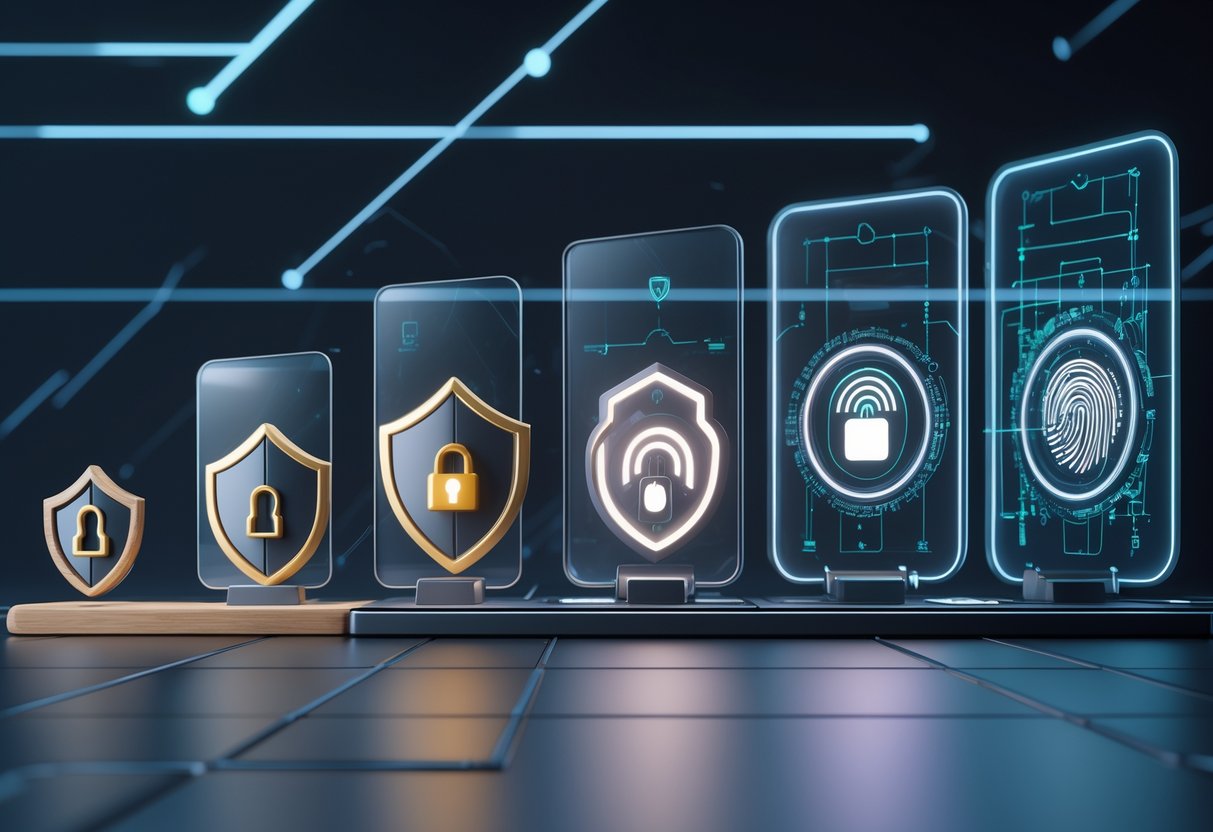
Early anti-cheat tools stuck to three main strategies. They watched for cheat patterns, suspicious behavior, and weird player actions to keep games fair.
Signature-Based Detection
Signature-based detection scans your computer for known cheat programs. Anti-cheat systems keep a database of cheat signatures—basically, digital fingerprints.
When you start a game, the system checks everything running against this list. If it finds a match, you’re out.
Valve Anti-Cheat (VAC) led the way with this in Counter-Strike. It scanned for cheat files and memory patterns, and other developers quickly followed.
But here’s the problem: cheat makers just tweaked their code a little to dodge detection. They used tricks like packing or obfuscation to hide from scans.
This turned into a never-ending chase between developers and cheaters.
Heuristic Detection Approaches
Heuristic detection focuses on weird activities, not just known cheats. These systems watch how programs interact with game files and memory.
If something tries to mess with game data or inject itself into the process, the system flags it.
Heuristic detection can spot new cheats that signature scans miss. It doesn’t need to know exactly what the cheat is—just that something’s off.
The downside? More false positives. Sometimes legit apps, like overlays or streaming tools, set off alarms.
Developers have to tune these systems carefully to avoid banning innocent players.
Behavioural-Based Methods
Behavioural detection watches how you play. If your aim is too perfect or your reaction time is superhuman, the system gets suspicious.
Metrics include things like:
- Aim precision—are you landing every headshot?
- Reaction times—are you responding faster than any human could?
- Movement patterns—do you move like a bot?
BattlEye and others collect gameplay data to build player profiles. They compare your actions to what’s normal for humans.
Consistent, unnatural accuracy can trigger an investigation.
This approach works well against sneaky cheats that avoid file detection. But it needs a lot of data and analysis.
Some top players worry their skills might set off the system. Subtle cheats that mimic real players can still slip through.
Rise of AI in Anti-Cheat Solutions
Game companies have started fighting back with artificial intelligence. They’re using AI to catch cheats and hacks that older systems just can’t handle.
Machine Learning for Cheating Detection
Machine learning algorithms chew through massive amounts of gameplay data. They spot patterns that look like cheating.
VACNet by Valve is a good example. It’s banned millions of Counter-Strike 2 accounts by tracking player behavior.
Machine learning excels at catching sneaky stuff:
- Micro-adjustments in aiming that seem normal but happen too often
- Reaction times that just aren’t possible for humans
- Movement that looks automated
These systems learn and adapt. When new cheats pop up, they update themselves.
Riot’s Vanguard uses similar tech for Valorant. It’s already kicked out millions of cheaters by watching how players behave across games.
AI systems build unique profiles for each player. If your accuracy or reaction time suddenly changes, it raises a red flag.
Natural Language Processing in Anti-Cheat
NLP watches chat and voice messages to spot cheaters working together. Team-based cheating is getting more common, and this helps fight it.
Modern cheaters coordinate through:
- Call-outs using outside software
- Messages for boosting or account swapping
- Coded language to talk about cheats
Anti-cheat systems scan chat logs for suspicious terms and timing. They look for signs that players are sharing info they shouldn’t have.
Tencent Games uses this in mobile titles. Their systems catch players sharing restricted info or working together unfairly.
NLP also helps spot account sharing by analyzing writing style. Everyone types a little differently, and that’s hard to fake.
Of course, privacy concerns pop up here. Companies have to balance catching cheaters with following data protection laws.
AI-Driven Data Analytics
AI-powered analytics process huge amounts of gameplay info in real time. They spot weird patterns across thousands of players at once.
These systems track things like:
- Mouse movement and clicks
- Network lag and connection details
- Hardware setup and performance
- Game client changes or odd processes
Anybrain’s tech is a solid example. It mixes gameplay analysis, visual processing, and biometric profiling into one package.
Analytics can spot outliers that humans would never notice. If someone’s headshot rate suddenly jumps by 300%, the system investigates.
Real-time analysis means cheaters get flagged or banned fast—sometimes within minutes.
These systems learn from every game. What works in one title helps catch cheaters in another.
They even predict new cheating trends before they blow up.
The Role of Anti-Cheat in Online Gaming Culture
Anti-cheat systems play a huge role in shaping today’s competitive gaming. They keep matches fair and help build trust between players and developers.
Impact on Fair Play and Competition
Anti-cheat systems really set the stage for fair competition in online games. Without these protections, skilled players just can’t compete against cheaters using aimbots or wallhacks.
This problem stands out most in games like Counter-Strike 2 and Valorant. Players pour hundreds of hours into honing their aim and game sense. When cheaters use software to skip all that effort, it just ruins the idea of skill-based competition.
Key impacts on competitive integrity:
- Keeps skill-based matchmaking fair
- Preserves legit leaderboard rankings
- Safeguards tournament prize pools
- Makes sponsored events trustworthy
Professional esports tournaments depend on strong anti-cheat measures. Organizers add several detection layers, like hardware monitoring and real-time behavior analysis.
The 2025 anti-cheat revolution has pushed competitive gaming closer to a real sport. Now, fair competition comes down to natural ability and training, much like traditional athletics.
Influence on Player Trust
Player trust is honestly the backbone of any successful online gaming community. When anti-cheat systems drop the ball, players just leave instead of dealing with unfair matches.
We’ve seen this pattern over and over. Games with weak anti-cheat protections lose players fast. Call of Duty: Warzone had huge waves of people quitting when cheating spiked before better systems rolled out.
Trust factors affected by anti-cheat effectiveness:
- Willingness to spend time learning the game
- Trust in competitive rankings
- Comfort with spending on in-game items
- Whether people stick around long-term
Modern anti-cheat uses machine learning to analyze player behavior on the fly. This tech spots suspicious patterns and boots cheaters before they can ruin too many matches.
Players feel more confident when games are transparent about bans and detection. When developers share statistics and info, the community trusts them way more than if they keep everything secret.
Community Participation in Anti-Cheat Efforts
Gaming communities actually do a lot to help anti-cheat efforts beyond what automated systems can catch. Player reporting is still one of the best ways to catch clever cheaters.
Players should report suspected cheaters through official channels. The best anti-cheat systems combine automated tools with community help.
Effective community anti-cheat practices:
- Reporting suspicious players with proof
- Backing fair play campaigns
- Avoiding fake accusations
- Teaching new players how to spot cheating
Community-driven efforts even show up in content creation. Experienced players make guides to help others tell the difference between cheating and legit high-skill play.
Some communities set up their own moderation. Discord servers and forums keep blacklists of known cheaters, which adds another layer of accountability.
Everyone has a part to play in keeping games fair. Developers build the tools, but it’s up to communities to use reporting and promote good gameplay standards.
Evolving Threats and Adaptive Responses

Cheat developers keep inventing new ways to get around anti-cheat systems, so security tools have to change fast. These days, threats include hardware-based attacks and external tools that run outside the game itself, so anti-cheat needs to get smarter all the time.
Hardware-Based Cheating Tactics
Hardware cheats are a nightmare for anti-cheat systems to spot. These tricks work at the physical level, skipping over most software checks.
DMA (Direct Memory Access) devices have gotten really popular among cheat makers. These PCIe cards read and write system memory directly, so standard anti-cheat tools barely notice them.
USB-based cheats pretend to be normal input devices. They show up as regular keyboards or mice, but they’re actually running advanced aimbots. To the anti-cheat, it just looks like normal user input.
Hardware ID (HWID) spoofing tools mess with system identifiers to dodge hardware bans. Cheat sellers now offer gear that can change:
- Motherboard serial numbers
- Hard drive IDs
- Network adapter MAC addresses
- Graphics card signatures
These hardware cheats aren’t cheap, but they’re super effective. They force anti-cheat tools to dig deeper into the system, often using kernel-level drivers that make some users uncomfortable.
External Tools and DMA
External cheating tools run completely separate from the game system, making them a real pain for traditional anti-cheat to catch.
Screen capture analysis tools use computer vision to spot enemies and tweak aim. These programs run on another computer, watching video feeds and sending commands back to the main gaming PC.
Popular external tools include:
- Color-based aimbots that spot enemy outlines
- AI-powered trackers using machine learning
- Network packet analyzers that intercept game data
Hardware input injection devices sit between your peripherals and the PC. They check the screen in real-time and change mouse movements before they hit the game.
Cheat makers are now using virtualization to hide their tools. Running cheats inside virtual machines or on extra hardware makes them nearly invisible to client-side anti-cheat.
Some setups use multiple computers linked by fast networks. One machine runs the game, another processes visuals and calculates plays, and they talk through normal-looking channels.
Counter-Measures and Continuous Updates
Anti-cheat systems have to change constantly to keep up with new tricks. It’s basically an endless back-and-forth between cheat creators and developers.
Behavioral analysis is now key for catching external tools. Modern anti-cheat watches for:
| Detection Method | What It Monitors | Effectiveness |
|---|---|---|
| Mouse movement patterns | Smoothness and acceleration | High for simple aimbots |
| Reaction time analysis | Speed of responses to cues | Medium for human-like cheats |
| Statistical anomalies | Consistency in performance metrics | High for obvious cheating |
Machine learning models study gameplay patterns to spot superhuman behavior. These tools learn from millions of legit players to figure out what’s normal.
Anti-cheat teams push frequent updates to stay ahead. Companies like BattlEye and Easy Anti-Cheat roll out new signatures several times a day to target fresh cheats.
Kernel-level protection is controversial but, honestly, sometimes necessary. These deep hooks can catch hardware cheats running below the app layer, but a lot of players worry about privacy.
Server-side validation adds another layer. By checking gameplay data on secure servers, anti-cheat can catch impossible actions or weird patterns that client-side tools might miss.
Game Anti-Cheat Engines and Their Innovations
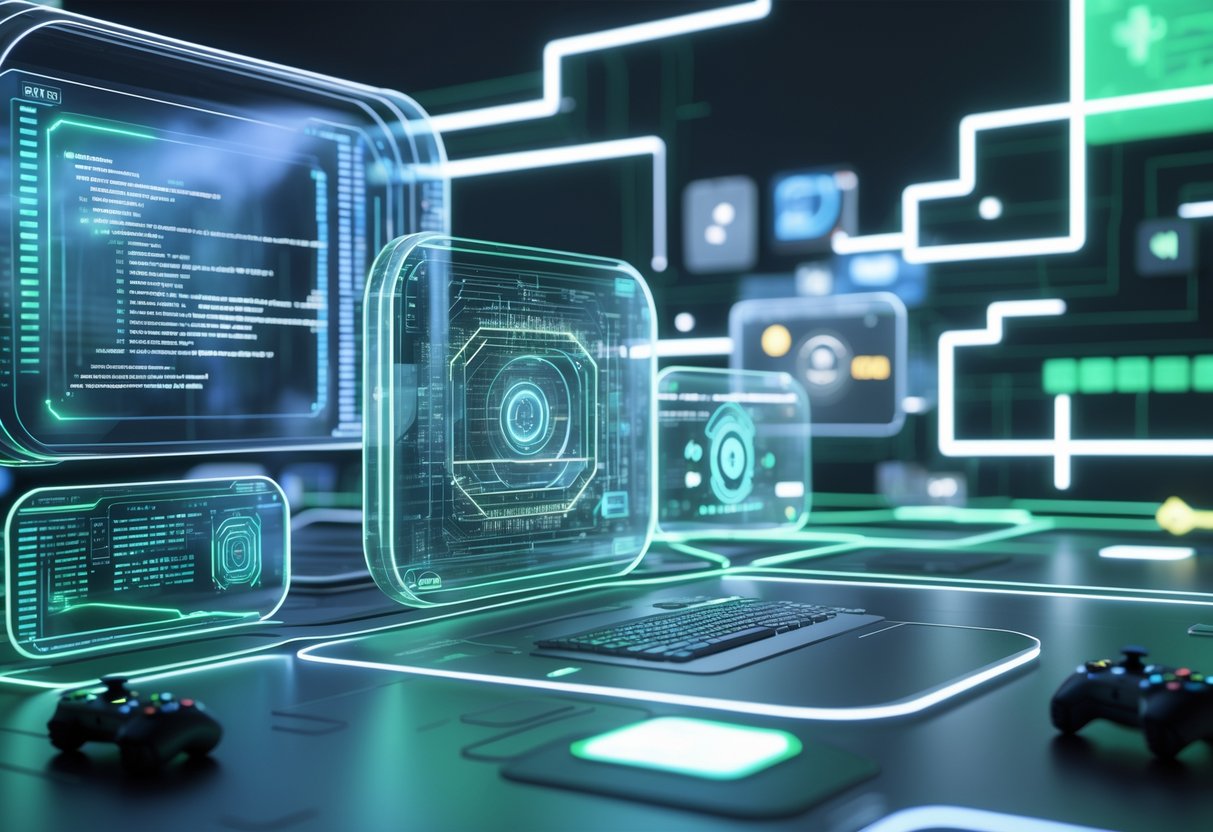
Modern anti-cheat engines blend AI with deep system monitoring to catch cheaters faster than ever. Now, these systems analyze player behavior, verify hardware authenticity, and use machine learning to spot new cheating tricks automatically.
Popular Anti-Cheat Engines
BattlEye leads the pack, supporting over 100 games like Rainbow Six Siege and PUBG. It relies on kernel-level detection to catch memory hacks and injection attacks.
Easy Anti-Cheat (EAC) powers Fortnite, Apex Legends, and Fall Guys. Epic Games bought EAC in 2018 and made it free for Unreal Engine devs.
Vanguard is Riot’s heavy-duty solution for VALORANT. It boots up with Windows to block cheats from loading first. Plenty of players pushed back at first because of privacy worries.
VAC (Valve Anti-Cheat) protects Steam games like CS2 and Dota 2. It delays bans to avoid tipping off cheat makers about what it’s catching.
| Engine | Games | Detection Type | Controversy Level |
|---|---|---|---|
| BattlEye | 100+ titles | Kernel-level | Low |
| Easy Anti-Cheat | Fortnite, Apex | Client-side | Low |
| Vanguard | VALORANT | Boot-level | High |
| VAC | Steam games | Signature-based | Medium |
Integration Process with Online Games
Game developers usually add anti-cheat engines early in development. They weave detection algorithms into both the game client and server.
Client-side integration means devs put SDK calls all over their codebase. The anti-cheat then watches memory, files, and processes live.
Server-side validation works with the client checks. Servers review player stats for impossible feats like superhuman reactions or perfect accuracy.
Most engines offer cloud dashboards so devs can check ban reports, tweak settings, and spot cheating trends. Integration costs vary—from free (EAC for Unreal) to thousands a month for premium.
Hardware fingerprinting makes unique device IDs to stop banned players from coming back. This pulls together CPU info, graphics card details, and system configs.
Case Studies: Ricochet and Others
Call of Duty’s Ricochet launched in 2021 with kernel-level drivers and machine learning. Within six months, it cut cheating complaints in Warzone by 85%.
Ricochet uses a shadow-banning system that throws suspected cheaters into lobbies together instead of banning them right away. This slows down cheat developers trying to test new tricks.
VALORANT’s Vanguard catches 99.9% of cheaters before they finish their first game. But, it did cause problems with some hardware drivers and security tools.
Apex Legends struggled when cheat makers bypassed Easy Anti-Cheat with hardware hacks. Respawn answered by adding server-side analysis and better reporting tools.
The mobile gaming scene brings its own headaches. PUBG Mobile uses AI to review suspicious gameplay after matches end, which helps cut down on false positives compared to live detection.
Gaming expert James Connolly puts it this way: “The most effective anti-cheat systems combine multiple detection methods rather than relying on single solutions.”
Balancing Privacy and Security

Modern anti-cheat systems walk a tricky line between blocking cheaters and protecting player privacy. Developers have to figure out how much access is really necessary without putting personal data at risk.
User Data and Ethical Concerns
Anti-cheat systems gather a ton of player data to catch cheaters. We’re talking mouse movements, keyboard inputs, running programs, and system specs. Some even check what apps you’ve got installed.
What data do anti-cheat systems typically collect:
- Hardware specs and driver info
- Active processes and installed software
- Gameplay patterns and input timing
- Network traffic and connection details
Things get dicey with kernel-level access. These systems run deep inside your operating system and can see almost everything, even when you’re not gaming.
A lot of players get uneasy about this level of surveillance. Anti-cheat with kernel access acts a lot like security software, but it’s made by game companies, not security experts. That opens up possible risks if hackers find a way in.
Transparency in Anti-Cheat Practices
Most gaming companies aren’t clear about what their anti-cheat does with your data. Players usually just click through long privacy policies without really knowing what they’re agreeing to. That lack of clarity leads to trust issues between devs and their communities.
Key transparency issues include:
- Vague privacy policies that gloss over data use
- Not enough info on how long data is stored
- Unclear rules about sharing data with third parties
- No opt-out for privacy-focused players
Some developers are starting to tackle these worries. They’re adding encryption and limiting data use to cheat detection only. Still, the gaming industry could use much clearer standards for handling player data.
The problem is, smart cheats need smart detection. That usually means more invasive monitoring to keep up. Striking the right balance between stopping cheaters and respecting privacy is still a tough nut to crack.
Challenges Facing Next-Generation Anti-Cheat
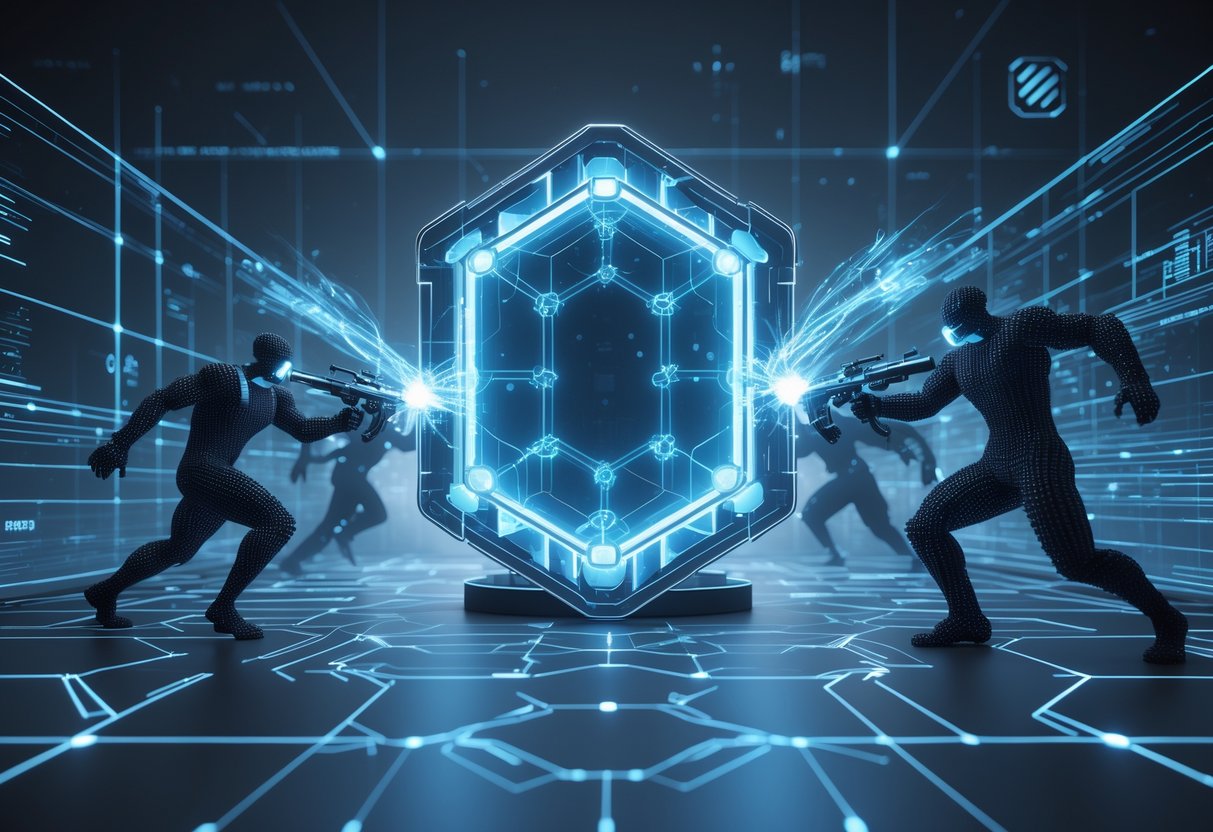
Modern anti-cheat systems face two big challenges threatening the future of fair competition. AI-powered cheats now act so much like real players that old detection tricks don’t work, while stricter monitoring systems risk flagging and punishing actual legit players.
Detection of AI-Assisted Cheating
AI-powered cheats might be the biggest threat to competitive gaming integrity we’ve ever seen. These programs analyze the movements of pro players and copy them with uncanny precision.
They tweak aim and timing just enough to look completely normal. Traditional anti-cheat tools just can’t keep up because AI cheats refuse to stick to patterns.
They randomize behavior slightly, slipping past detection. The software actually learns from every match and shifts its tactics as it goes.
Current detection methods include:
- Behavioral analysis that watches mouse movements over time
- Statistical monitoring that flags impossible accuracy rates
- Hardware authentication to check gaming equipment
Gaming expert James Connolly puts it this way: “The arms race between AI cheats and anti-cheat systems pushes both sides to develop more advanced technology, but cheaters often stay one step ahead.”
Machine learning anti-cheat systems now process hundreds of data points per second. They compare player performance to massive databases of real gameplay.
But this approach brings its own headaches, like system slowdowns and privacy worries.
False Positives and Player Impact
False positives can be a nightmare for honest players. Sometimes anti-cheat systems mistake regular play for cheating, and suddenly you’re hit with a ban or account lockout, no warning at all.
Common false positive triggers include:
- Suddenly amazing performance, especially in clutch moments
- Swapping out hardware, which messes with input timing
- Network lag that makes your movements look weird
- Software conflicts with legit gaming tools
The fallout can be brutal. Pros miss out on tournament qualifiers because of false bans.
Casual players lose access to games they paid for. Appeals can drag on for weeks, sometimes even months.
Gaming companies try to juggle security and player experience. If they tighten detection, they catch more cheaters but also ban more innocent players. If they relax it, sneaky cheats slip through.
Kernel-level anti-cheat systems raise even more privacy questions. These tools monitor your whole computer, not just the game. Players are understandably nervous about what data gets collected or what vulnerabilities might open up.
Future Trends in Anti-Cheat Evolution
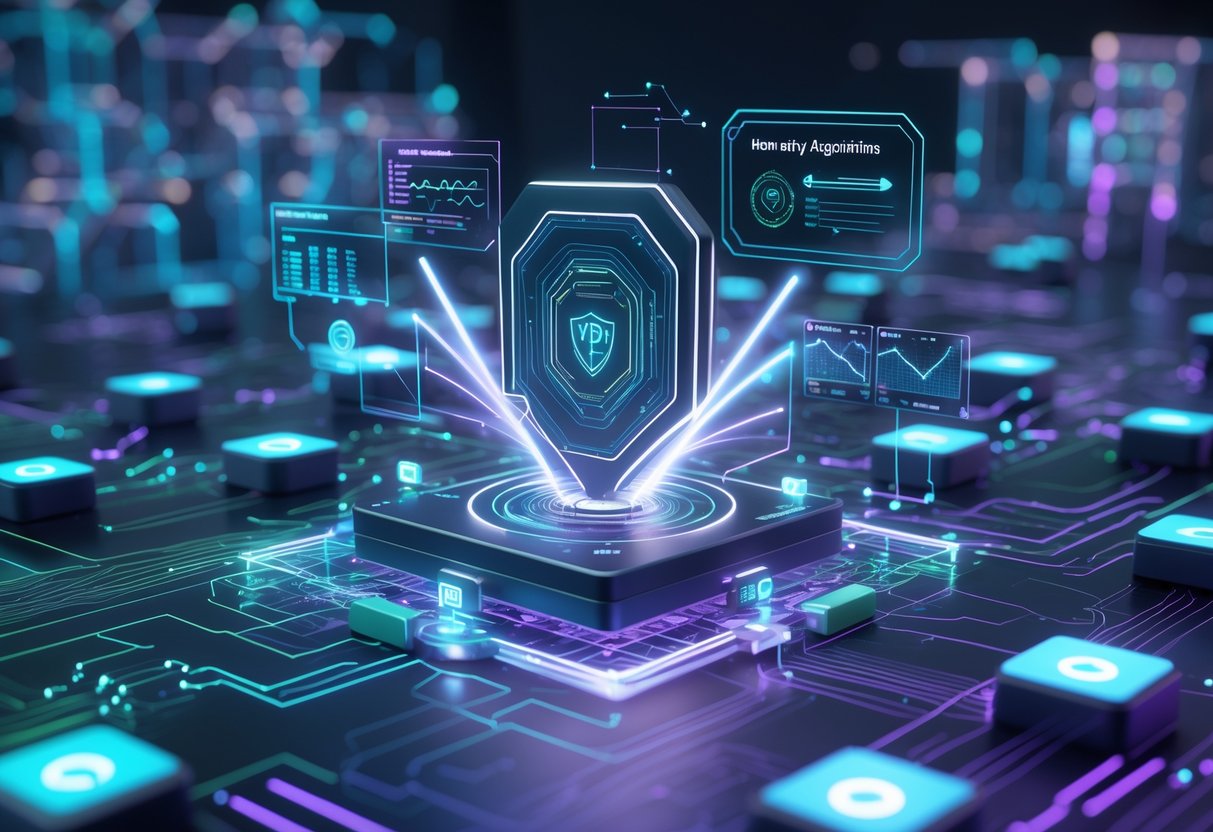
The next wave of anti-cheat tech will try to predict threats before they even show up. Developers want to build industry-wide defenses that adapt in real time.
Machine learning will drive these adaptive systems, evolving right alongside the cheats.
Predictive AI and Proactive Defenses
Predictive AI could be the next big leap in anti-cheat. Instead of waiting for cheats to appear, these systems try to spot them before they hit the scene.
Modern AI studies how cheats get made and how they’ve changed over time. It uses this info to guess where new threats might pop up.
Behavioral prediction tracks subtle shifts in player habits. If someone’s aim jumps by 400% overnight, the AI notices right away.
The system learns what normal skill growth looks like. If something’s off, it raises a flag.
James Connolly says: “We’re seeing AI systems that can spot anomalies in milliseconds – things human moderators would never catch.”
Cross-game learning helps too. If the AI finds a new cheat trick in Call of Duty, it can use that knowledge to protect Counter-Strike and other games instantly.
Collaborative Industry Efforts
The gaming industry is shifting toward shared anti-cheat databases. Big publishers now swap info about known cheaters and exploit tricks.
This teamwork means stronger protection for everyone. If Epic Games bans a cheater in Fortnite, other platforms get the memo instantly. The cheater can’t just jump to another game and start over.
Industry-wide standards are starting to take shape. Companies like Valve, Riot Games, and Activision are working on common rules for anti-cheat.
This makes it tougher for cheat makers to find a loophole that works everywhere.
Hardware companies are jumping in too. Graphics card makers now build anti-cheat features right into their drivers. That makes hardware-level cheats a lot harder to pull off.
It’s starting to look like a unified front against cheating. No single company has to fight this alone anymore.
Adaptive Learning Systems
Machine learning algorithms keep changing up their detection tricks. With every new cheat they see, they get a little smarter.
These systems adapt in real time, even during matches. If someone tries a new exploit mid-tournament, the AI can react within minutes instead of waiting for a patch.
Biometric profiling gives each player a unique fingerprint. The system learns your reaction times, movement habits, and decision speed.
If you suddenly act way outside your usual pattern, it investigates.
Advanced pattern recognition digs deeper than obvious cheats. The AI can spot tiny aim assists or slightly faster reflexes that normal systems ignore.
| Learning Type | Detection Speed | Accuracy Rate |
|---|---|---|
| Traditional | Hours to days | 85-90% |
| AI-Powered | Minutes | 95-98% |
| Predictive AI | Instant | 99%+ |
These adaptive systems feed off each new cheat, making the whole network tougher and more prepared for whatever comes next.
Implications for Game Developers and Communities

Anti-cheat tech is changing fast, and that means new challenges for developers. Communities also have to adjust as security measures affect how they play and connect.
Developing Effective Anti-Cheat Policies
Game developers are under more pressure than ever to build strong anti-cheat systems while respecting player privacy. Modern games need security setups that go way beyond the basics.
Key policy considerations include:
- Budget allocation – Big publishers like Riot Games and Valve now pour hundreds of millions into their own anti-cheat tools
- Privacy boundaries – Players keep questioning kernel-level access and hardware fingerprinting
- False positive management – Even smart AI sometimes flags legit skilled players as cheaters
Developers need to communicate clearly about what their anti-cheat systems actually do. If you’re transparent, gaming communities are more likely to trust you, even if they push back at first.
The battle between cheat makers and anti-cheat teams never really ends. Policies have to change constantly because what works today might flop tomorrow.
Player Education and Engagement
Gaming communities aren’t just bystanders—they actually help keep games fair through education and getting involved in anti-cheat efforts.
Players who understand the security measures usually end up supporting them.
Effective community engagement strategies:
- Regular updates about new cheating threats and how detection works
- Clear reporting systems so players can flag suspicious behavior
- Educational content that explains why certain security steps matter
Pro tournaments now require verified hardware. At first, players pushed back, but eventually most accepted it for the sake of fair play.
When communities actively support fair play, everyone’s experience improves. People start to see advanced anti-cheat as something that protects their achievements, not just a hassle.
Frequently Asked Questions
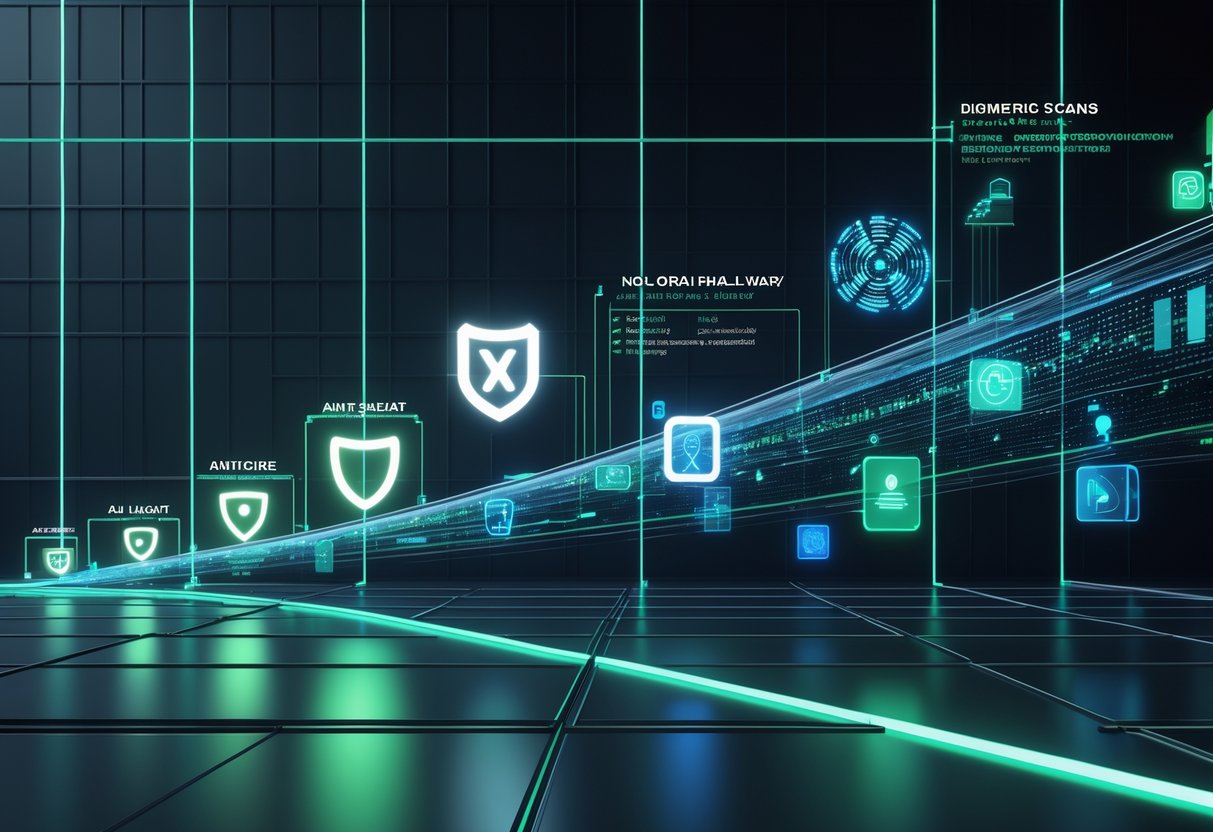
Modern anti-cheat systems face some wild challenges—from sniffing out clever cheats to keeping gameplay fair and protecting player privacy. Here are a few common questions about how these systems actually work.
How do modern games detect and prevent cheating?
Modern games use several layers to catch cheaters. Client-side agents watch game files and memory while you play.
Server-side systems analyze player behavior in real time. Many anti-cheat tools run kernel-level drivers, operating below normal software.
These drivers spot memory tampering, process injection, and unauthorized system tweaks.
Popular systems like BattlEye, Easy Anti-Cheat, and Riot Vanguard mix these methods. They scan for known cheat signatures and watch for odd gameplay patterns.
Real-time analysis compares your actions to what humans can actually do. Systems flag impossible reaction times, perfect accuracy, or other superhuman feats.
What measures are game developers taking to enhance anti-cheat systems?
Developers now use kernel-mode drivers for deeper system access. These detect cheats that sneak in at the same level as the operating system.
Machine learning helps spot new, unknown cheats. Systems look at mouse curves, click timing, and crosshair precision to catch artificial behavior.
Multi-layered security combines client monitoring, server analytics, and behavioral detection. Cheat makers have a much harder time bypassing everything at once.
Secure updates use code signing and rollback prevention. With regular updates, systems stay ahead of new cheat tricks.
Could you explain the impact of machine learning on cheat detection?
Machine learning focuses on player behavior instead of just static cheat signatures. These systems examine mouse movement, reaction speed, and consistency to pick out artificial patterns.
ML algorithms can sniff out cheats that try to mimic humans. They notice weird aiming patterns or suspiciously consistent performance.
Behavioral analysis helps catch cheats nobody’s seen before. If your gameplay suddenly looks way different from normal player data, the system flags it.
These tools keep learning from fresh gameplay data. They adapt to new cheat techniques without waiting for someone to write a new signature.
What are the challenges in creating effective anti-cheat software?
Cheat developers keep changing tactics to dodge anti-cheat. They use packers, obfuscation, and encryption to hide their code.
Hardware ID spoofing lets banned players sneak back in under new identities. Some cheats even run on separate devices or in virtual machines to avoid detection.
Kernel-level access brings up privacy and security concerns. Players worry about system crashes and what data anti-cheat software might collect.
False positives can really hurt trust. Systems need to be aggressive enough to catch cheaters, but not so aggressive that they ban innocent players.
In what ways can players help maintain a fair gaming environment?
Players can report suspected cheaters using in-game tools. Detailed reports with timestamps make it easier for investigators to check things out.
Avoiding cheat software protects your account and helps the whole community. Even so-called harmless cheats can get you banned for good.
Supporting games with strong anti-cheat encourages devs to keep investing in fair play. Player feedback actually helps improve detection systems.
Community vigilance—on forums, Discord, wherever—helps spot new cheat methods. Sharing info about suspicious patterns makes anti-cheat better for everyone.
What are the potential consequences for gamers who attempt to cheat?
Game companies often hand out permanent account bans when they catch someone cheating. Usually, there’s no real way to appeal or reverse these bans.
Sometimes, they even go further and hit you with a hardware ID ban. That means you can’t just make a new account on the same system—you’d actually need different hardware to get back in.
Some publishers take it up a notch and share ban info between their games. So, if you get caught cheating in one title, you might suddenly find yourself locked out of others from the same company.
If you’re a professional esports player, the risks are even bigger. You could get banned from tournaments, dropped by your team, and your reputation might never recover.

